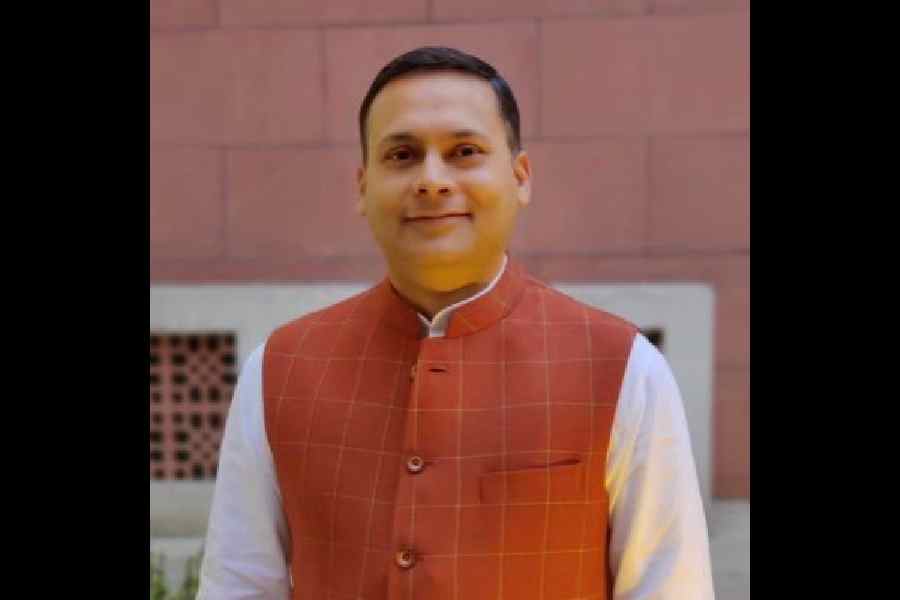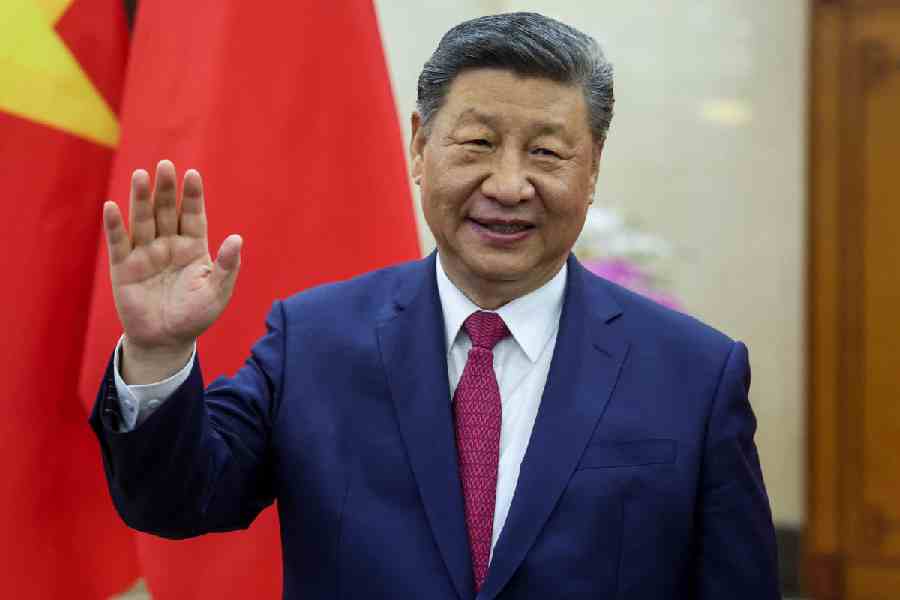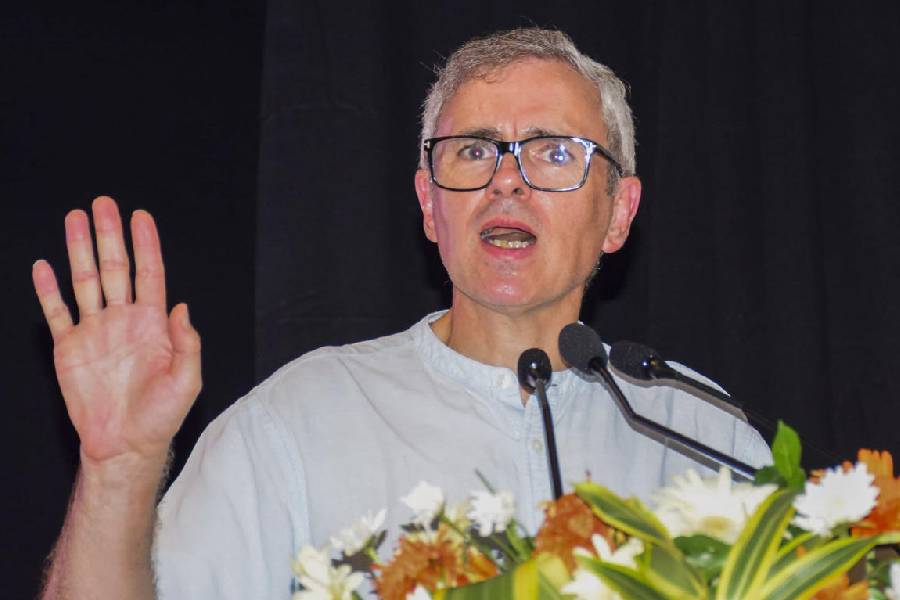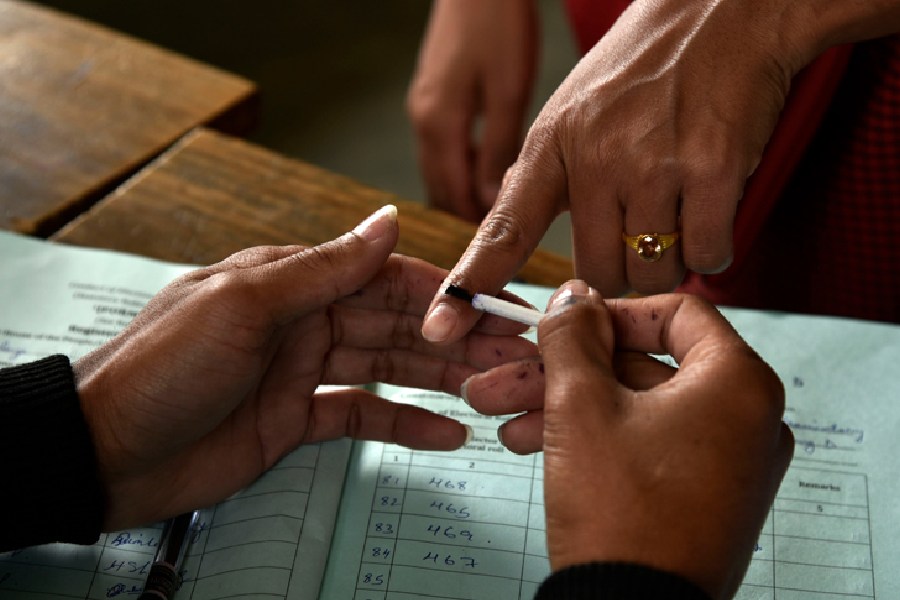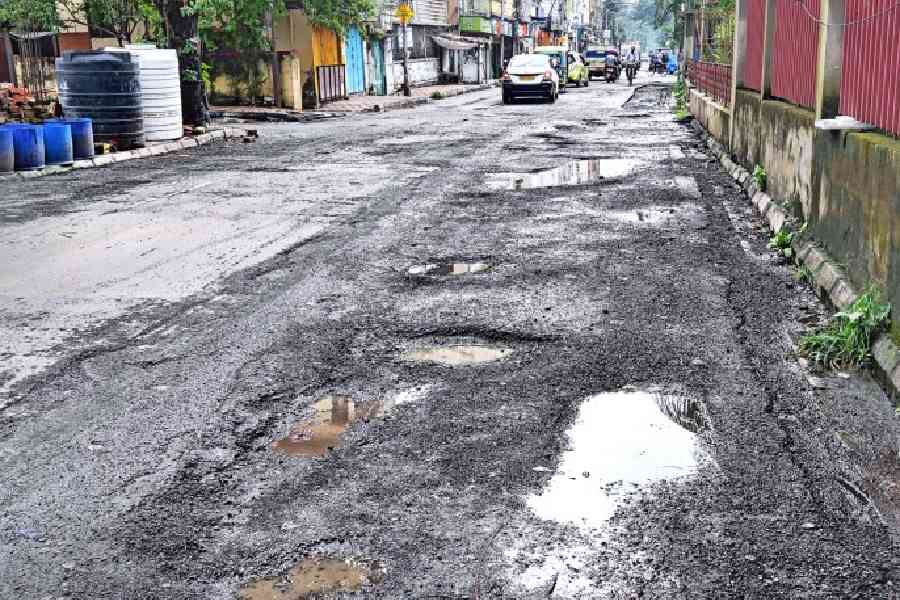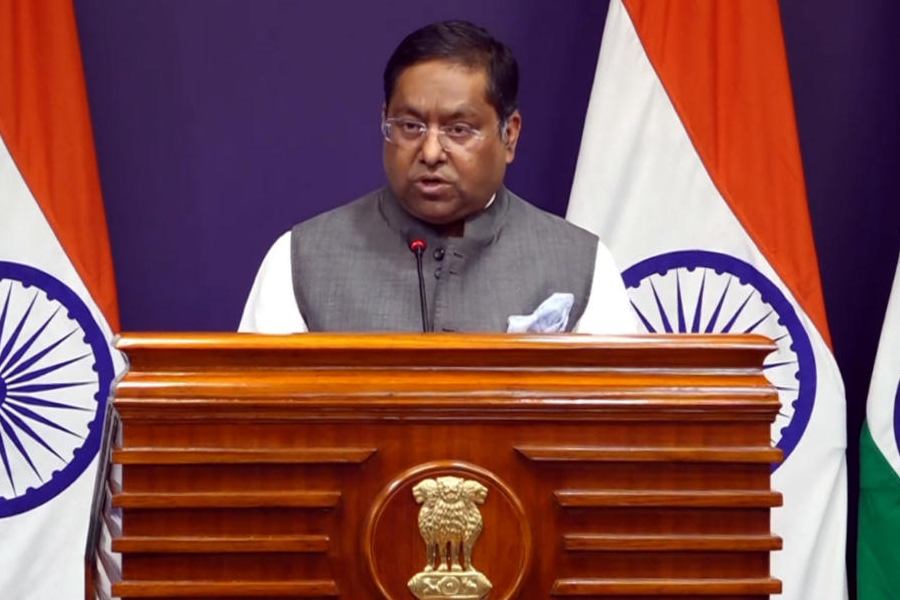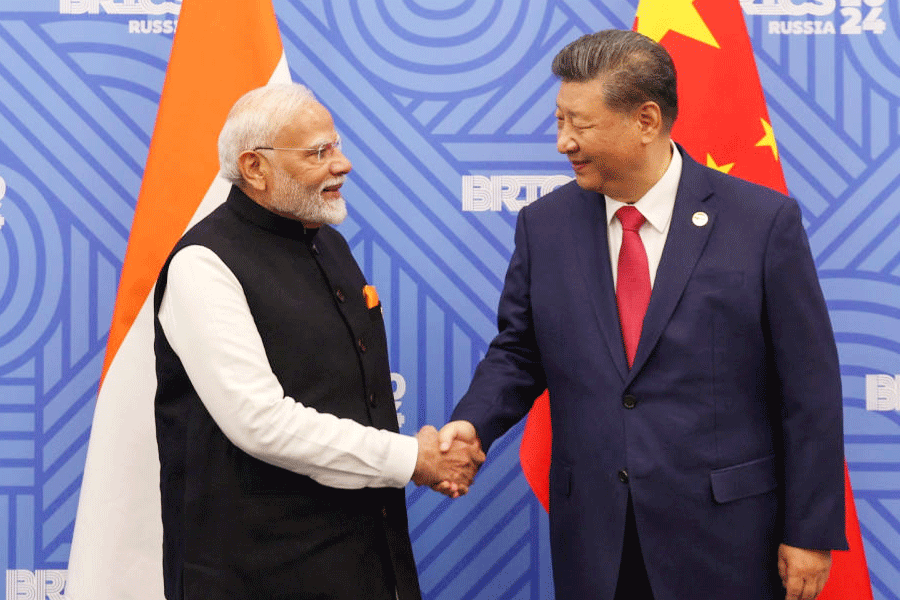 |
| An idol lying in obscurity at the Kamakhya temple complex. Picture by S.H. Patgiri |
Guwahati, July 13: Assam?s most famous Hindu shrine is about to be cloned.
Standing majestically atop the Nilachal Hills in Guwahati, the Kamakhya temple is among the most venerated Shakti shrines in the country, but archaeological relics linked to this 17th century structure remain scattered and neglected. The temple management has now decided to build a double-storeyed museum ? identical to the main structure ? to preserve for posterity all artefacts that are a part of the shrine?s history.
Koch monarch Biswa Singha built the original temple in 1553 AD, but it was destroyed in the early 16th century by the invader Kalapahar and rebuilt in the 17th century by King Naranarayan of Cooch Behar. Images of the builder and related inscriptions are in the temple, but numerous rock carvings and sculptures are scattered across the Nilachal Hills. Many of these have been damaged over the years.
The Kamakhya Debuttar Board?s executive committee met last week to decide how to preserve the priceless relics. Nabakanta Sarma, general secretary of the committee, said all members endorsed the proposal to build a museum designed like the shrine. ?The proposed museum will have a beehive like shikhara to maintain architectural harmony with the temple.
The double-storeyed museum will also house a reading room, a research cell and a conference hall. The temple management has identified a plot of land on the western side of the temple complex for the museum. ?We already have a collection of stone sculptures, inscriptions, paintings and manuscripts for preservation,? Sarma said.
The Kamakhya Debuttar Board intends to approach the state archaeology department and Gauhati University for technical assistance in preserving the artefacts. ?Even a floral pattern in a rock carving has meaning. We will have to explain both the religious and archaeological significance of each artefact that will be kept in the proposed museum,? Sarma said.
The museum will be built from the earnings of the committee and donations from devotees. The budget for the project is being worked out.
The architectural patterns of some of the relics on the Nilachal Hills echo Buddhist architecture. Kamakhya also features unusual bull figurines on the southern facet of the temple. Embedded in the wall are two large bull-headed human images, while a third stands in the northeastern corner of the Sobhagya Kunda, which is the pond adjacent to the shrine.
These statues date back to the 9th century and are enigmatic because Hindu iconography does not allude to any bull-headed, human-bodied divinity.


